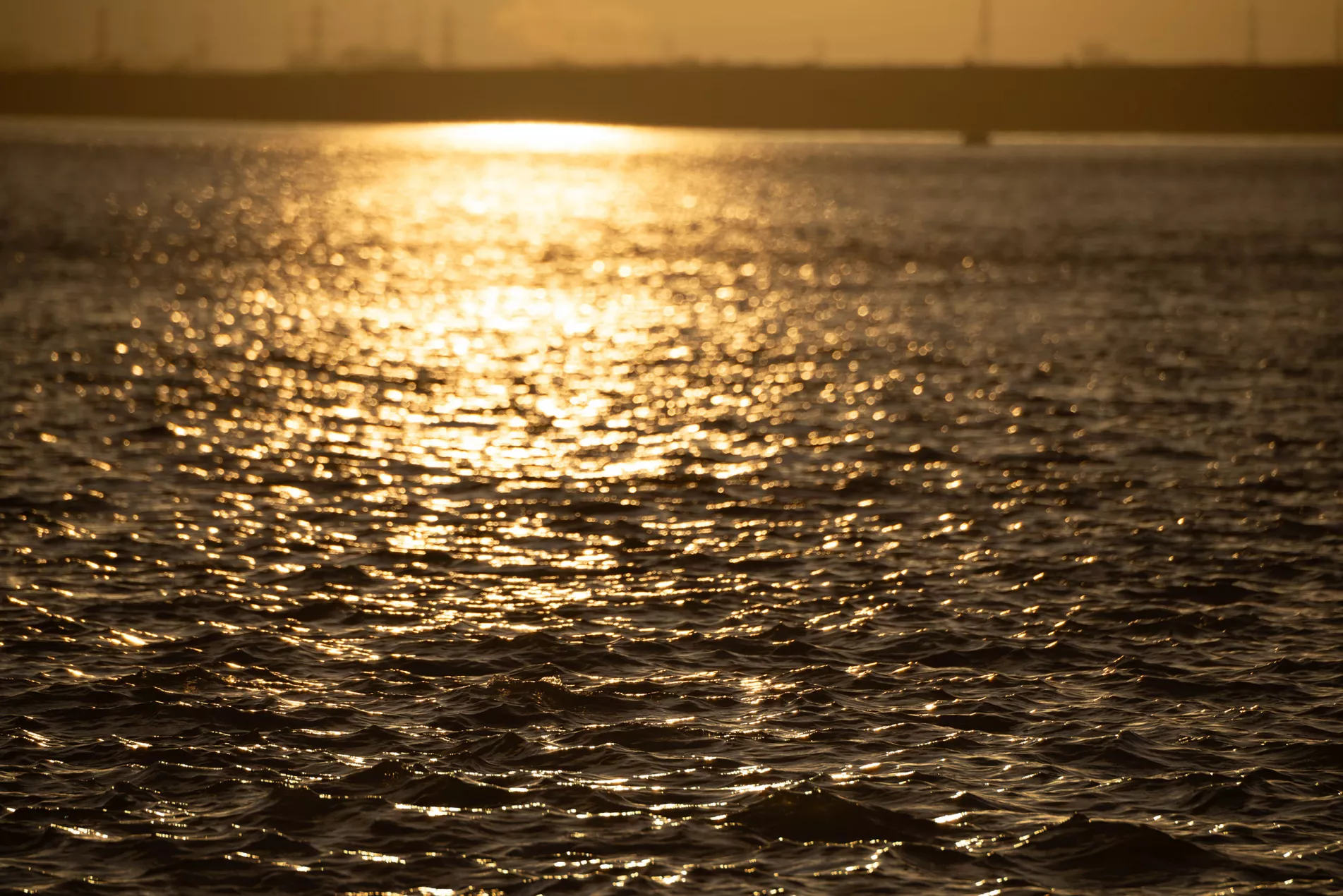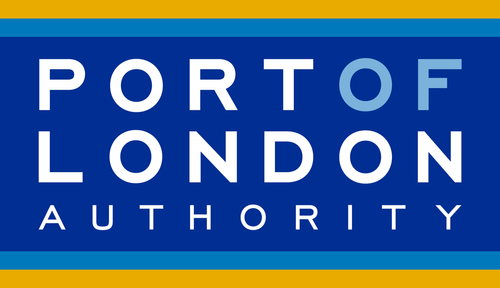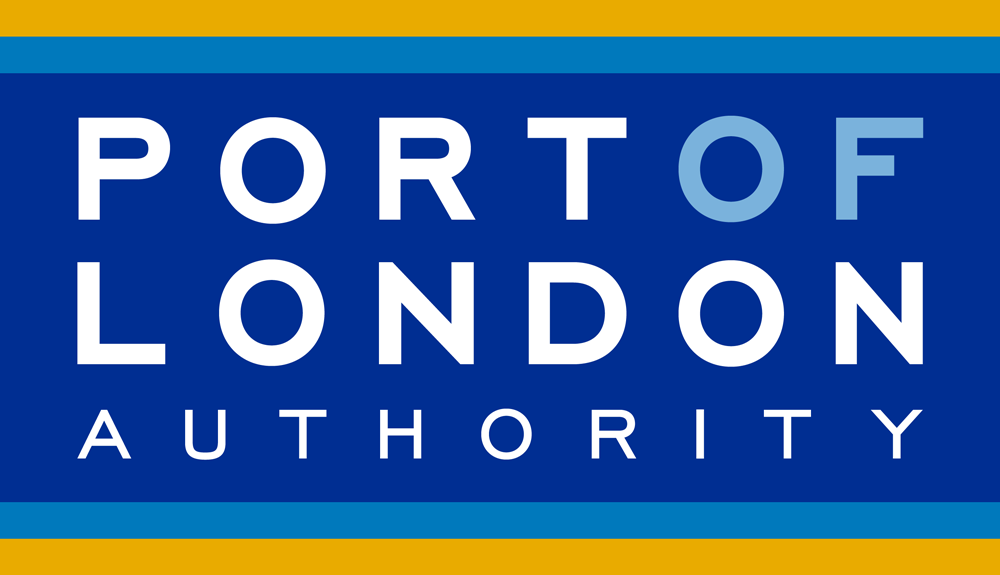Live Tides
NOTICES TO MARINERS
Charts & Surveys
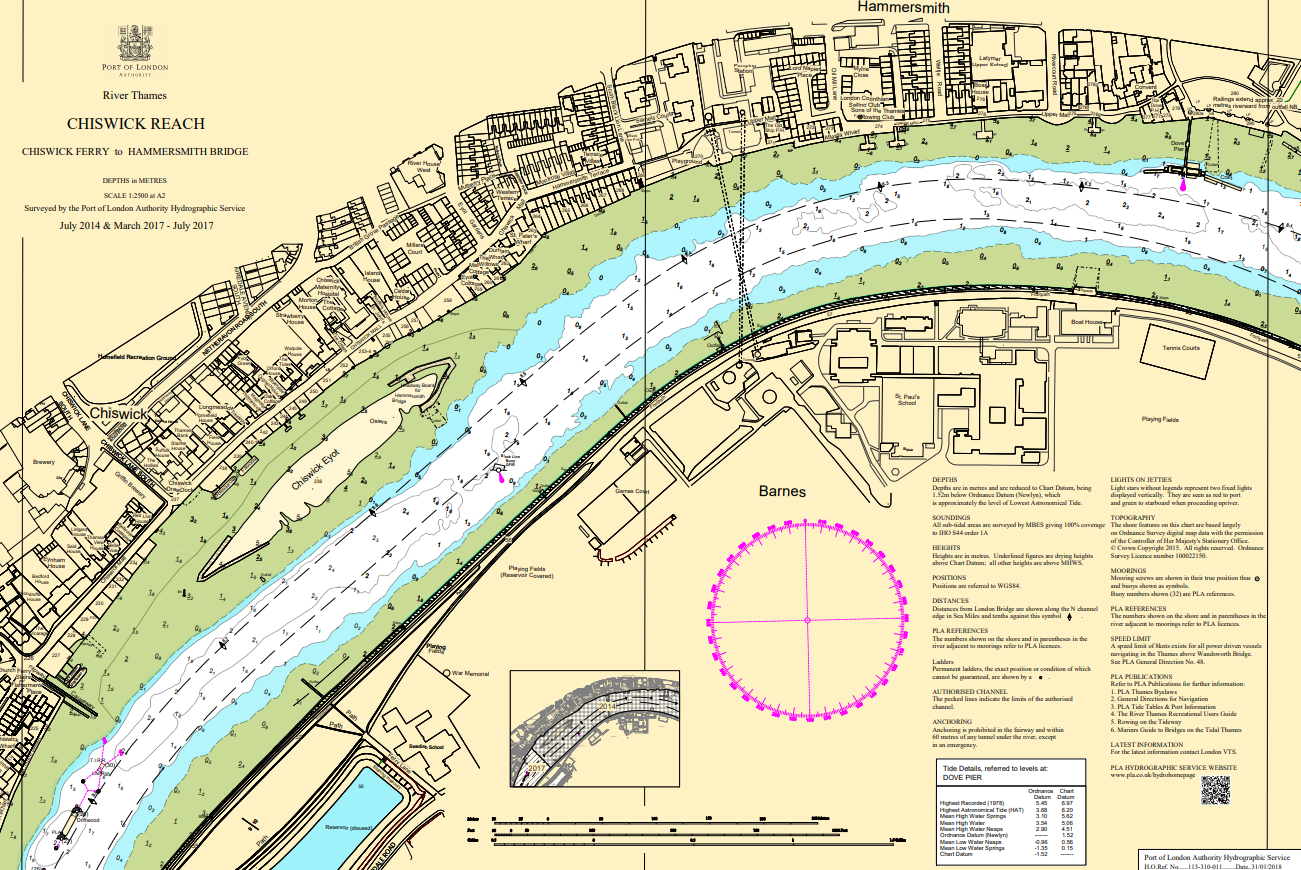
Incident reporting
Life-threatening emergencies on the river:
Call 999 and ask for the Coastguard
For near miss, safety observations and incident reporting click below
Over a century of cockling
Andrew Lawrence
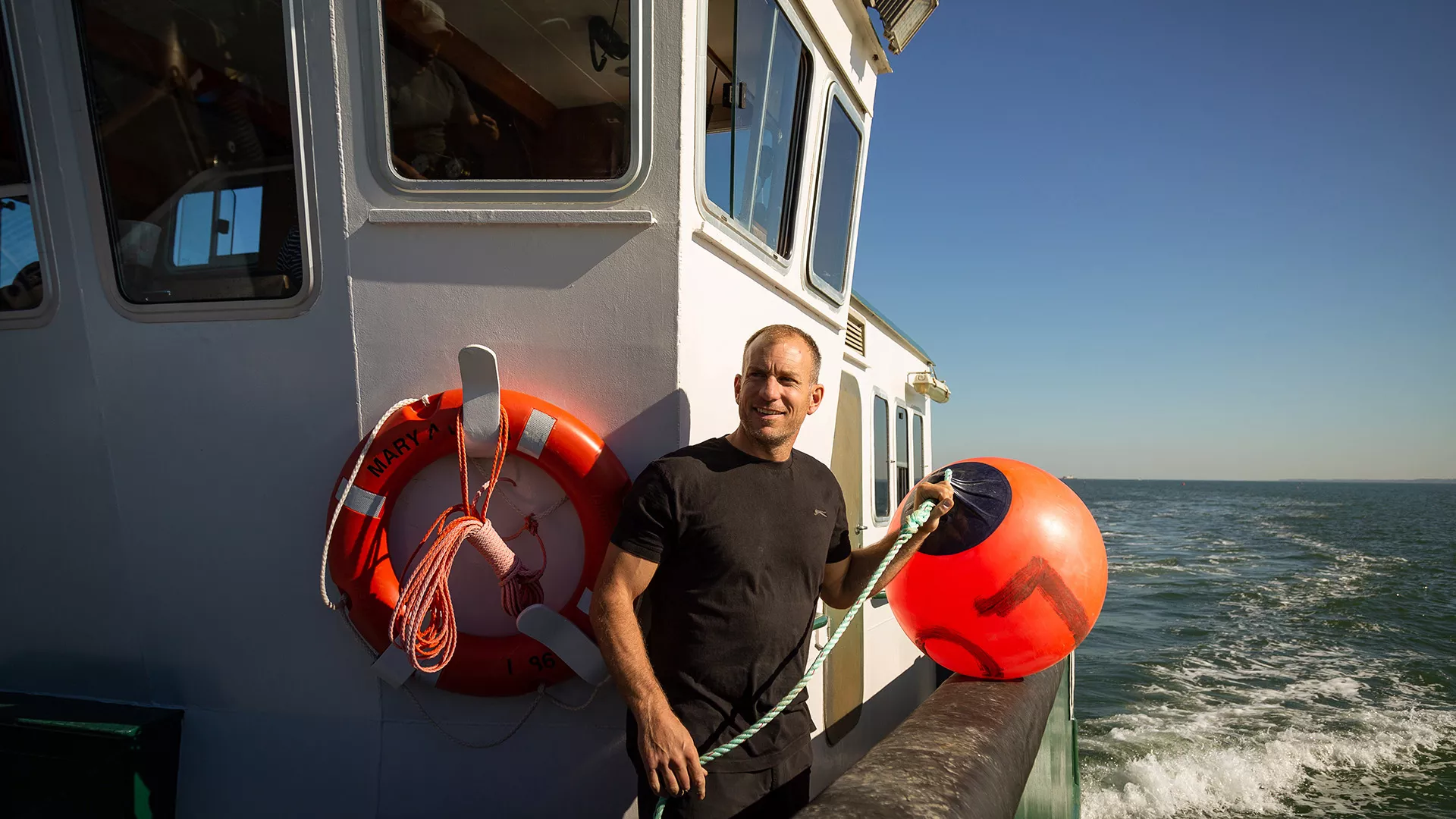
To mark World Oceans Day 2021 (8 June), this year highlighting how people depend on clean seas for their livelihoods, we meet Andrew Lawrence of Essex-based Osborne & Sons Shellfish.
Hooked on fishing
“I was born in Rochford hospital in January 1975.
“We come from a long line of fishermen, dating back several hundred years, over five generations
“My earliest memories are watching my grandad unload the cockle boat outside our café.
“As a child, I was always into fishing and sailing. Anything to do with the water, really.
“I am lucky – nowadays I am out on the river most days.
“Like most of my family, I went to the local comprehensive school. I enjoyed sport and maths mostly and still do today.
“But I always knew that I would work in the family business.
“During the school holidays, I would be allowed to go out on the boat with my uncle and great uncle.
“I started unloading the boat aged 12, and left school at 16, to work full-time for the business.
A family tradition
“The Thames has been the focus of our business for over 140 years, shrimping and cockling.
“Our original cockleboat Renown was involved in the evacuation of the troops from the beaches of Dunkirk, and sadly was blown up on its return journey.
“We have had several cockle boats built since, some locally. Our newest vessel Mary Amelia LO86 was built in Newhaven, Sussex.
“Our business premises were initially used to cook cockles straight from the boat, and then sold at the front of the building.
“With changing health regulations, our processing plant moved to the row of cocklesheds, where we are situated now, alongside our fishmongers.
Working life
I don’t really have a typical day, but it is more a bit more routine during the cockle season, from mid June to mid October.
“We leave to go out on the boat from Leigh-on-Sea, as the tide is coming in and steam to whatever cockle ground we will be working from. Once we have fished our “TAC” quota, (Total Allowable Catch), we will ideally return on the outgoing tide, or wait until the next incoming tide.
“Once we return to Leigh-on-Sea, I unload the boat with our excavator and drive the tractor to our factory, where we start the processing of the cockles.
“I oversee the factory, ensuring all our cooking standards are met, and that the end product is plump, tasty and as grit free as possible.
“Out of season, we have a multitude of maintenance, both on our boats and in the factory to ensure they are working well for the next season.
“We also ensure the smooth running of our café and fishmongers on shore.”
Surviving COVID-19
“The business has been affected by the pandemic in many ways.
“There have been shortages of products and supplies and we have had to adapt our ways of working, like most people.
“But our sales have actually gone up over the last years.
“The pandemic has served to raise awareness of the fish and shellfish industry.
“The support we have had from our local customers has been amazing. There has been a definite trend towards people wanting locally produced food.”
A growing business
“We have many customers around the rest of the country and overseas too.
“If we can get our product to you, we will!
“Our aim is to offer the best quality cockles in the country
“If you are eating cockles in the UK, it is highly possible they have come from Leigh-on-Sea.
“We source as much locally as possible, but the reality is that some species are not available in our local waters.
We are very proud to be playing our part of making the UK fishing industry has a secure, sustainable future
A changing environment?
“The weather is a big factor in our business, both on shore and also for fishing.
“The unusual weather patterns that we have been seeing create headaches for us, affecting cockles growth and our yield. Cockles need rain to grow and they do not like the hot weather.
Quick fire
- Favourite meal? Fresh cockles of course, served with vinegar and pepper.
- Will you be watching the European football championships? I will be cheering on England – and Germany.
- Claim to fame? I appeared in a Remembrance Day edition of the BBC’s Countryfile in 2017, programme, explaining Renown in the Battle of Dunkirk.
- Pet hates? Lateness. Time and tide wait for no one.
Find out more about Osbourne's fish.
Related content
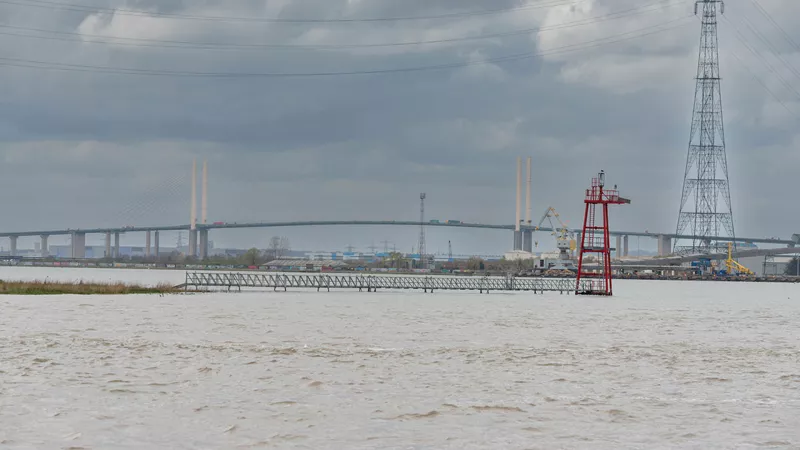

Location: London/Gravesend Remuneration: £28,971 per annum for a commitment of up to 24 days per...
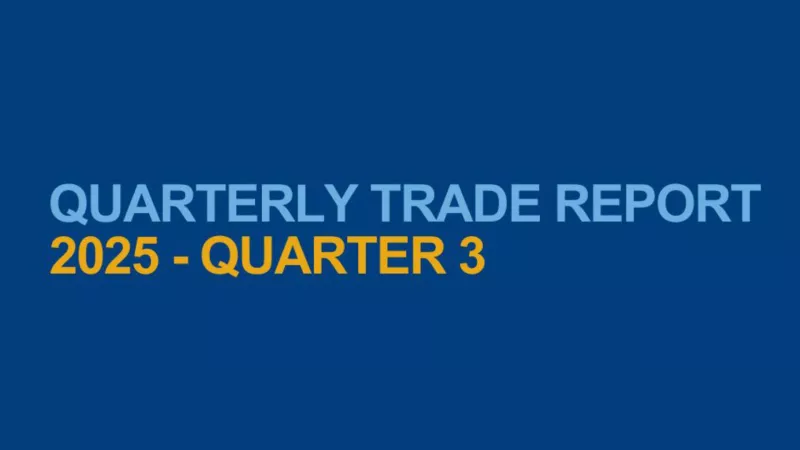
A moment of pride for the Thames
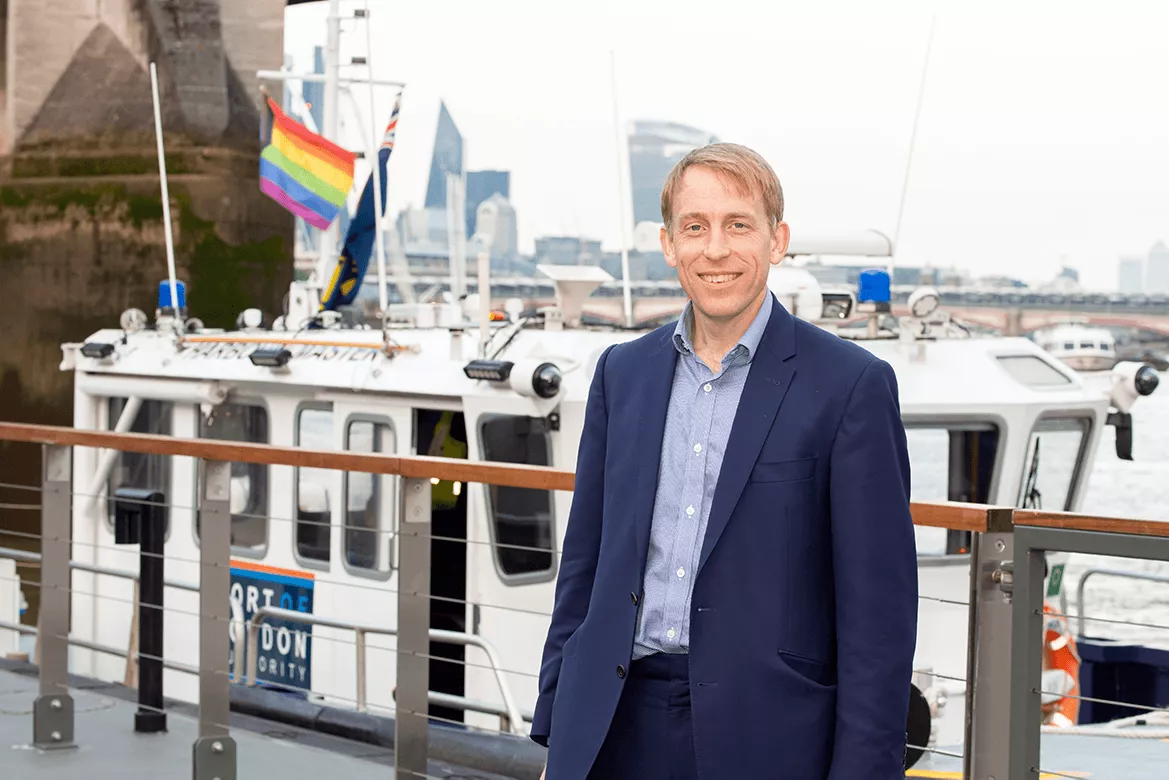
At the start of Pride month, Robin Mortimer, chief executive of the Port of London Authority (PLA), welcomes the contribution of the tidal Thames LGBT+ community to the river – past, present and future.
The iconic new Woods Quay, in the shadow of Waterloo Bridge, was a double source of good news last week.
Firstly, the quay, home to Woods Silver Fleet, was welcoming back visitors for the first time since the pandemic struck.
With summer finally showing signs of life, it was great to be on the river socially again, for the first time in months.
And the event was a real milestone for the river community – with representatives and supporters of the tidal Thames’ LBGT+ community gathered on the quay to celebrate the start of Pride month.
Organisations linked to the river, from Teddington to the North Sea were involved, ranging from the London Fire Brigade and the Met Police, to the RNLI, Thames21 and Uber Boat by Thames Clippers.
It was a first for the river – and felt like a celebration of that.
Over the centuries the tidal Thames has always welcomed - and relied on - people of all backgrounds from around the world. So promoting diversity – in all aspects – builds on a culturally diverse history.
Now we need to be more vocal in supporting and promoting acceptance of the LGBT+ community – whether working on the river or visiting for sport, recreation or cultural events.
The PLA as an organisation is strongly committed to making sure that everyone should feel comfortable to be themselves at work, and not feel that part of themselves must be kept under wraps in some way.
That’s something I feel strongly about, and I know many colleagues do too – because we want the river to be a great place to work, whoever you are.
That’s why this month we are proudly flying the Pride flag on our vessels and buildings.
This is about giving a clear message – as so many other sectors and organisations have - that LGBT+ people are totally welcome members of the river community.
I am looking forward to more events this year, as the COVID restrictions lift. The Thames is a great place for a celebration – and the more people who can experience that the better!
Related content


Location: London/Gravesend Remuneration: £28,971 per annum for a commitment of up to 24 days per...

Future of the tidal Thames: Have your say
Engagement launched targeting a zero-emissions port and river in a vibrant Net Zero economy.
The Port of London Authority (PLA) is inviting anyone with an interest in the tidal Thames to get involved and help shape Thames Vision 2050, an updated framework for development of the 95 miles of river from Teddington Lock to the North Sea.
The Thames is home to the UK’s biggest port, busiest inland waterway and a blue/green corridor through the heart of London for wildlife, sport, recreation and culture. The original Thames Vision was developed by the PLA and stakeholders through 2015 covering 20 years out to 2035. Now, with the economic, environmental and social landscape transforming, the Vision is having its first update with a drive towards a vibrant Net Zero economy.
PLA chief executive, Robin Mortimer, explained:
“Thames Vison 2035 was published in summer 2016. Since then we have seen great progress in many areas of river use. The last five years have also been a time of transformation with greater urgency in our response to climate change, Brexit resetting the UK’s trading relationship with the rest of the world and the COVID-19 pandemic causing an unprecedented social and economic shock, potentially accelerating change across our cities and the way we live our lives.
“With a ‘new normal’ now hopefully in sight, the time is right to review progress and look again to ensure the Thames is ready to play a full role in the recovery and transition towards a Net Zero economy.
“The original Vision was the first strategy for the tidal Thames, developed with stakeholders and taking the broadest view of the river across trade, travel, sport, environment and culture. Now we are asking people to work with us again to shape a new Vision out to 2050.”
In shaping the consultation, the PLA convened an expert panel of representatives from Harvard University, Exeter University, Resilience Shift, Lloyd’s Register and The Business of Cities to discuss the major drivers set to influence the development of the Thames between now and 2050. Early input from the expert panel focussed on sustainable development goals including: social (equitable access to employment and wider opportunities), environmental (emissions reduction and climate resilience, water quality and biodiversity) and economic (wealth and job creation, including recovery from the impact of the COVID pandemic).
The initial six-week engagement on Thames Vision 2050 launches today (Tuesday, 1 June), with a simple, four-question online survey available to complete.
To understand how operations on the Thames will evolve between now and 2050, the PLA commissioned Oxford Economics to complete a Port Trade Forecast. Drawing on input from a wide range of Thames operators, it sets out several forecast scenarios, with outlooks for 2050 port trade ranging from 54 million tonnes and 92 million tonnes.
Further evidence being collated includes a Royal HaskoningDHV study to model the future of energy demand and supply on the tidal Thames, so that vessels calling in the port, or operating on the river have access to the fueling infrastructure that they need. A sports participation study is also underway, which will inform development of the Active Thames programme to increase participation in watersport, the workforce that supports it and make the most of existing assets including clubhouses and the Thames Path National Trail.
“The Thames is the reason why London was established where it is and every generation rethinks the use of this shared space connecting our capital to the rest of the world,” concluded Robin Mortimer. “Because of that, partnership working is key to making things happen and making best use of the river in the decades ahead.”
Through the six weeks a series of three engagement events will be held:
- Tuesday 22 June, 6.00 pm, IET London and online
Vision update and discussion – in-person event, streamed online too. - Tuesday 29 June, 2.00 pm, online
Online debate with expert panel members on the global factors set to influence the future of the tidal Thames. - Tuesday 6 July, 4.30 pm to 6.30 pm, London Rowing Club
Drop-in session at London Rowing Club, Putney
You can register for these events via the webpage.
The initial stakeholder engagement around the development of Thames Vision 2050 will close at midday on Wednesday, 14 July 2021.
Related content


Location: London/Gravesend Remuneration: £28,971 per annum for a commitment of up to 24 days per...

River's LGBT+ pride, as passengers welcomed back

Representatives and supporters of the tidal Thames’ LGBT+ community gathered on the river to celebrate the start of Pride month at Waterloo Bridge.
The event, arranged by the Port of London Authority (PLA), was hosted by Woods Quay, the new home of Woods’ Silver Fleet.
Other organisations involved include the Greater London Authority, London Fire Brigade, the Met Police, the RNLI, the Thames Skills Academy and Transport for London, as well as boat operators, rowing clubs and environmental charities, spanning the 95-mile course of the tidal river, from Teddington to the sea.
The gathering coincides with the return of tourist and commuter passenger boat operations on the river, as COVID-19 restrictions ease.
Robin Mortimer; PLA chief executive, said: “As Pride month gets under way, it’s important to celebrate the LGBT+ community and ensure we continuously promote acceptance.
“The river is strengthened by the diversity of all those who help ensure it is a safe and attractive place, for everyone living and working along its banks, as well as for visitors.
“Our collective message to people with a professional, voluntary or recreational link to the river is clear: Whatever your sexual orientation, you are welcome.”
Blaeke Downie, from Surrey Quays, who is head of customer service operations at Uber Boat by Thames Clippers, said: “I’m thrilled to take part in this event, celebrating Pride on the Thames.
“As someone who’s fairly new to living and working on the river, seeing it evolve and grow to become more diverse and inclusive is truly heart-warming. It’s so exciting to be a part of that journey.”
Ryan Sargent, land referencer for the Lower Thames Crossing, from Essex, said: “A river course can often be seen as a dividing line or barrier, but the literal and metaphorical bridges we have built across it over the centuries show the great lengths we go to connect to each other.
“This same sense of connectivity and celebration of our diversity is a cornerstone of Pride, art and culture.”
Gina Blair, master of the Company of Watermen & Lightermen, representing boat operators on the river, said: “As the recent lockdowns have highlighted, the river is a place for everyone.
“Walking its banks has helped so many to cope mentally with the pandemic. We now look forward to welcoming more people of all backgrounds back to travelling on the river, for work or pleasure.”
Related content


Location: London/Gravesend Remuneration: £28,971 per annum for a commitment of up to 24 days per...

Carry on up the creek
Jill Goddard

Hit hard by the pandemic, Creekside Discovery Centre in Deptford was on the verge of closure – until its founder, former chief executive of the Thames Estuary Partnership, Jill Goddard, came to the rescue.
River inspiration
“I was born in Falconwood, near Eltham in south east London.
“My first memory of the Thames is crossing London Bridge on a bus with my mother, to see the Christmas lights. I still remember their glow reflected in the river.”
Creek history
“Deptford is the only Thames creek, where at low tide you can safely wade and explore, with the help of a guide.
“London’s first passenger railway crosses it and Bazalgette’s Greenwich Pumping Station is just next door. Trades and industries, from chemical works to tidal mills and slaughterhouses, have all used its banks.
“The creek’s waters, muddy banks and flood defence walls are home to shrimps, crabs, fish, birds and 300 species of wildflowers.
“A charitable trust was established in 1999 to look after this unique habitat.”
Community roots
“The idea for the Creekside Discovery Centre came from a local resident, back in 1995.
“At the time, I was working for Lewisham Council’s ecology team. I got the creek added into the two local authorities’ regeneration programme – the site is adjacent to the border with Greenwich.
“In those days, the creek was an eyesore, unloved and full of tidal mud and rubbish.
“The surrounding area was blighted by unemployment, running at 24 per cent.
“But I could see the potential. Both boroughs were keen to develop the potential of Creekside properties.
“Originally the plan was for a non-tidal canoeing facility. I dealt with the detailed environmental assessments that resulted. However, the plan proved too costly and would have a build-up of silt, impacting navigation.
“As an alternative, and to maintain the creek as a local resource, the centre was born.
“Getting it off the ground involved close liaison with the PLA, the Environment Agency and landowners.
“The first design was for a converted barge, but feedback from a local boatowner suggested this wasn’t ideal.
“A concerted fundraising push, supported by Dame Joan Ruddock, the local MP at the time, and many others, made the transition to a land-based centre possible.
“It was a massive effort by all involved to quadruple the amount of money available and make the centre a reality.
Highs and lows
“Our ‘Curry on up the Creek’ evenings, coinciding with summer low tides, will stay long in my memory; a creekside walk, followed by locally-cooked, Indian food, enjoyed watching the sun go down. They were happy days.
“Not forgetting the day we hosted the finale of a torchlit procession of zombies through the narrow local streets, with our beach and rowing boats providing a stunning, closing backdrop. The actors’ and singers’ Victorian costumes and dusty faces still haunt me!
"There were low points too, of course. As a charity, we are dependent on donations and our finances have been on a knife edge at times. In 2006, we only had £500 in the bank. Our conservationist, Nick Bertrand, had to conduct our outreach work on a shoestring. I helped out, running the finances when I’d clocked off my day job. It was full on. Somehow, we hung on.”
Pandemic paralysis
“Then COVID-19 came along. It hit us pretty hard. Paying visitors ceased in mid- March 2020. Our income stopped overnight.
“Lockdown meant all seven members of staff had to be furloughed or made redundant. It was heart breaking.
Road to recovery
“We’re hoping to spring back.
“Since last June, I have been back running the centre day-to-day, on a voluntary basis, with the support of our committed trustees.
“Our popular low-tide walks resume again in June, along with school visits. We can now offer venue hire again too, as well as provide natural habitat land management support to the professional building sector
“In a great team effort, we have just about managed to keep things ticking over. But we need help. Maintenance and running costs have eaten up most of our cash reserves. We desperately need more donations.
“We are extremely grateful for the emergency support we have received from Clifford Chance, Thames Water, Tideway and Lewisham Council. Their donations have literally kept us afloat.
“An injection of cash from Pulse Films, who used us as a location for an Ikea promotion, has really helped too.
“My sincere thanks go to all our sponsors. We’ve achieved so much together.”
Future priorities
“As a charity in a changed world, we don’t underestimate the challenges ahead.
“We particularly want to get better at communicating our cause.
“We are for people and wildlife. The centre is a special and unique urban haven for wildlife and people, from across London.
“It is critical that we look at new ways of promoting what we do.
“The more money we raise, the more staff we can recruit in long-term roles.
“We are looking forward to resuming our work, enabling people of all ages to enjoy the creek and its wildlife, right in the heart of urban London.
“It’s very special to see people growing to appreciate and understand nature in the raw, making its own decisions.
“Being local and accessible is important to us.
“We are a great alternative to a trip to the seaside.
“Many Londoners know very little about the importance of the Thames to London.
“The centre is a chance to change that.”
Safety first
“Safety is paramount for everyone at the centre.
“The tide is fast-moving and the foreshore mud is deep. Both can catch people out, sometimes with serious consequences. Understanding that fosters a new-found respect for the river.
“It is why we are developing a new training programme, Creek Know How, which will launch on our website soon.”
Opportunities to help out
“I’d love to hear from people who want to train as a guide for low-tide walks, or help with our schools programme.
“Of course, money matters too. A regular monthly donation of just £3 would make the world of difference, for example helping us purchase vital equipment, like waders to keep your visitors’ feet dry!”
Top tips
“I have many favourite places on the Thames, but high among them are Erith Marshes and Gravesend, where the river really widens out. I have a particular fascination for the working river.
Quick fire
- Perfect weekend? A coastal walk, plus comfortable pub accommodation, good local food and good company - accompanied by red wine, or G&T!
- First record ever bought? Elvis Presley’s Blue Suede Shoes.
- Pet hates? People who don't care and who don't listen!
If you would like to help Jill get the centre back on its feet, please contact her via [email protected] or visit their website.
National Volunteers’ Week runs from 1 – 7 June this year.
Related content


Location: London/Gravesend Remuneration: £28,971 per annum for a commitment of up to 24 days per...

Tidal Thames Water Safety Forum
Progress Report May 2019-May 2021
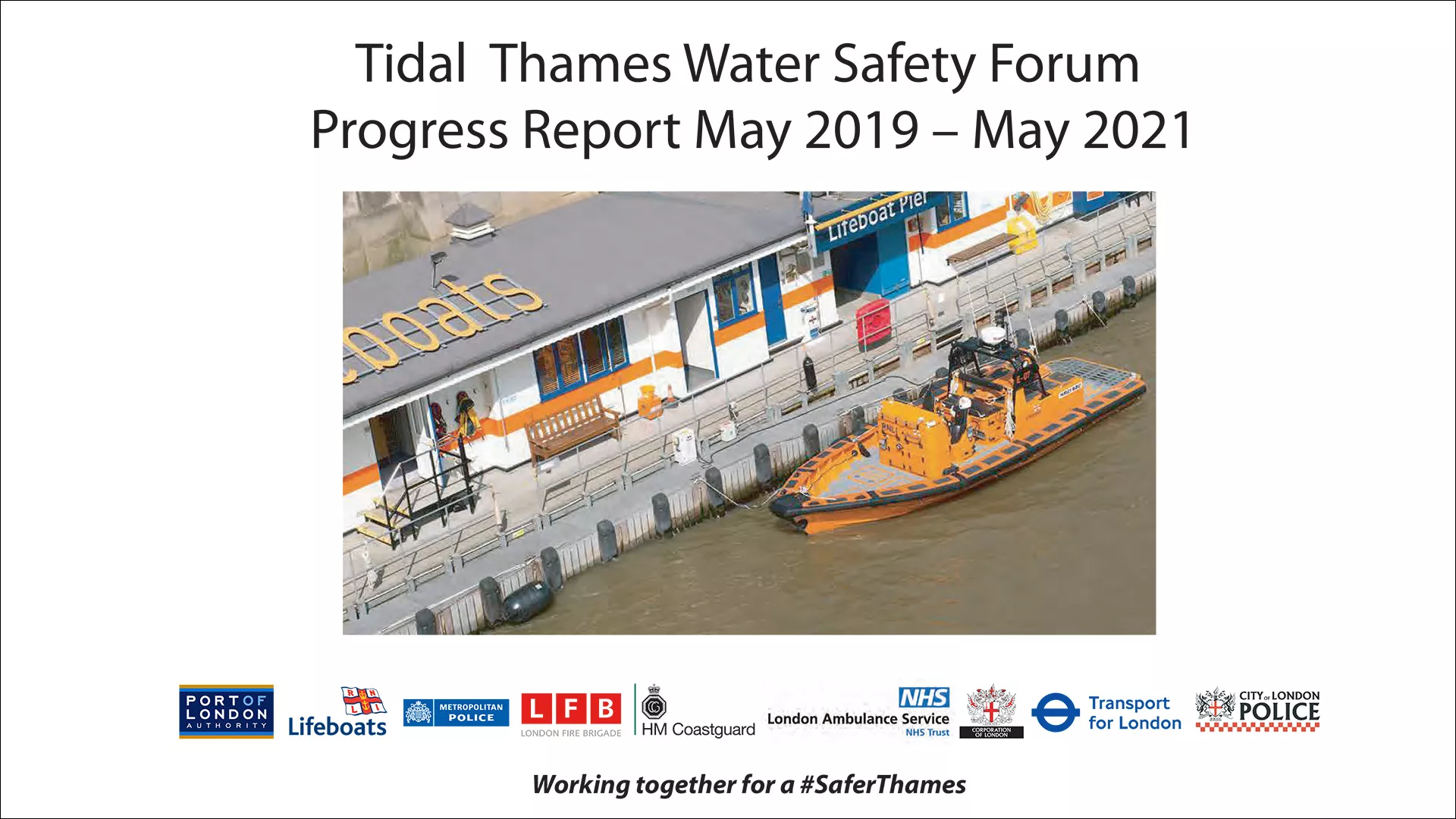
The Tidal Thames Water Safety Forum (TTWSF) is committed to reducing the number of people who drown in the tidal Thames, either accidentally or deliberately.
Launched in May 2019 by HRH The Duke of Cambridge, our Drowning Prevention Strategy sets out our collective ambition to improve safety on the tidal Thames, in line with our commitment to make it as safe a river as possible.
Since the launch, the forum’s founding members – Royal National Lifeboat Institution
(RNLI), London Fire Brigade (LFB), HM Coastguard (HMC), Metropolitan Police Marine Unit (MPMU), London Ambulance Service (LAS) and the Port of London Authority (PLA) – have been joined by City of London Corporation (COLC), Transport for London (TfL) and the City of London Police (COLP). All are committed to playing their part in delivering a safer Thames.
Two years on, this report provides information on our progress with delivering the strategy.
New study commissioned as London targets zero carbon port
The Port of London Authority (PLA) has awarded a contract to model the future of energy demand and supply on the tidal Thames as we look to shape the zero carbon port for the future.
The award, to Royal HaskoningDHV and start of the work, was announced at the PLA’s online annual stakeholder forum held today (Tuesday, 11 May). Chief executive Robin Mortimer says that the new study is essential to ensure that the port remains competitive in the long term. It will be a building block of an updated strategy for the river: Thames Vision 2050.
“The future of Thames river use is going to be shaped by substantial change as the economy decarbonises in response to climate change, new technologies emerge, trading patterns adjust, and we recover from the pandemic,” he explained. “We have actively been looking at what this means for the port over the last eighteen months.
“Our port trade forecasts show a decline in oil product cargoes in the port through the 2030s as the economy decarbonises, whilst new opportunities will emerge in sustainable fuels. This will be matched to changing energy needs of ships calling in the Port and smaller vessels working on the river. The new study will assess energy demand and the infrastructure needed to meet it.
“We will share the findings with stakeholders as we shape Thames Vision 2050. This long-term strategy for the river will set out the zero carbon future for the UK’s biggest port, busiest inland waterway, centre for wildlife, sport, recreation and culture.”
Royal HaskoningDHV, working with University Maritime Advisory Services, will undertake the energy demand study for the PLA, building on the Emission Reduction Roadmap for Inland Vessels on the tidal Thames, released in 2020. The roadmap sets out options available for reducing air and carbon emissions, including biofuel and emissions abatement, battery-electric, and fuel cell-electric; it concluded a mix of energy provisions will be needed to suit the different operational needs on the tidal river.
The aim of the energy demand modelling is to assess the energy solutions and infrastructure needed to support decarbonisation in order to create certainty for adoption of low carbon technologies, for operators on the Thames, including the PLA’s own vessels. It will help the PLA and the wider Thames community in making their investment decisions.
The first phase of the study will look at the different needs along the tidal Thames between now and 2050, when the UK is legally obliged to achieve Net Zero, based on stakeholder contributions and previous research by the PLA. Factors considered will include the speed of technological change for both inland and international shipping fleets, future growth, geographic constraints, safety, supply chain, current regulations, and commercial viability.
The second phase will address the feasibility of delivering the identified solutions at specific representative sites, gauging the pros and cons of the best suited solutions, including cost, spatial and ancillary infrastructure needs, resulting in a likely scenario for different use cases. Short-, medium- and long-term options will emerge, including the mix of diesel, biodiesel and other transition fuels, including LNG.
James Trimmer, director of planning and environment, said:
“The Energy Mapping and Demand Project will allow us to set out a clear plan for what will be installed where and when, helping us, other operators and landowners make decisions on investments in innovative technologies. It will also support the development of new jobs and business services as the transition to new technologies progresses.”
The model will be developed over the next couple of months. The summary of the results will be published on our website later in the year to help all relevant stakeholders access the information.
The PLA also expects to begin an initial six week call for evidence on an updated Thames Vision, covering the period to 2050 in late May. This update will combine the port forecast and energy modelling to look forward to actions required for the adoption of low carbon fuels by maritime operations and the consequences on health, wildlife and water quality. The initial Vision, launched in mid-2016, covered the period to 2035. A five year Thames Vision Progress Review has been released today and is available at: www.pla.co.uk/ThamesVision.
The PLA last year announced its commitment to achieve Net Zero by 2040, or earlier. Its latest annual environment report has also been released, reflecting progress across air & water quality; resource; and biodiversity.
Related content


Location: London/Gravesend Remuneration: £28,971 per annum for a commitment of up to 24 days per...

Kickstarters' river trip to meet employment minister
“Kickstarters”, recruited by the Gravesend-based Port of London Authority, as part of a Government scheme to help unemployed young people, travelled up the River Thames to meet the employment minister, Mims Davies MP, at Westminster (10 May).
Seven young people (aged 16- 24) have so far been recruited by the PLA under the scheme, designed to give them experience in a real working environment. It is hoped their six-month placements, funded by the Government, will lead to permanent positions.
- Mary Ajanaku (22) joined the PLA’s hydrography team (4 May), which works to survey the bed of the tidal River Thames. Raised in Gravesend, she has recently moved to live in Brixton. A graduate in psychology with health studies from De Monfort University, she has previously worked in the finance sector.
- Isobel Burrowes (23) is a newly recruited to the PLA’s facilities team, which looks after 11 sites, from Richmond Lock to the estuary. A former pupil of Mayfield Grammar School in Gravesend, she is a history of art graduate from Sussex University. Her duties will include reviewing the PLA’s art collection dating back to 1910.
- Brandon Cripps (19), from Hoo, studied motor vehicle engineering at Bromley College. He will spend his six months placement with the PLA’s marine services team, maintaining river infrastructure along the 95-mile length of the tidal Thames. Prior to the pandemic, he worked temporarily on pleasure boats in central London.
- Gemma Durkin (24), who worked previously as an admin assistant for a wealth management company, is now part of the PLA’s procurement team. Another Gravesend resident, she studied glassblowing at the University of Creative Arts in Farnham.
- Sean Holdforth (22) from Welling, graduated in economics and politics from Kent University in 2020. His work with the PLA will focus on environmental data management, in particular finding ways to improve the current data system to be more user-friendly and efficient, to support the PLA’s journey to reach Net Zero by 2040.
- Enrik Hoxha (22) studied for an IT apprenticeship at St John’s Secondary School in Gravesend. His recruitment to the PLA’s IT team is his first post since completing his studies. He hopes to further his knowledge while on the help desk, assisting colleagues across the organisation, including those working from home, due to the pandemic.
- Tito Okanlami (24), from Dartford, is a graduate in accounting and finance from Bournemouth University. She is now part of the PLA’s commercial team, where her work includes developing new methods for analysing business. Her local MP, Gareth Johnson said: “I wish Tito the best of luck with this placement. I hope this kickstart at the PLA is the first step in a successful career for her in commerce and business.”
Minister for employment, Mims Davies MP, said: “It’s fantastic to see the PLA backing this Government’s Kickstart scheme – truly buoying the career prospects of our next generation of workers and helping them develop the key skills to thrive in work. There is real potential for progression into permanent roles after the six months, highlighting how our Plan for Jobs is delivering long-term opportunity, as we push to build back better and level up across the country.”
Jackie Doyle-Price MP, who chairs the All-Party Parliamentary Ports & Maritime Group, said: “A career in the maritime sector is varied and rewarding, reflected in the roles these young adults are undertaking with the PLA. Young people have been hit hardest by the economic fallout of the pandemic. This scheme provides that all-important first step on the career ladder.”
Robin Mortimer, chief executive of the PLA, said: “With the pandemic seriously affecting young people’s job prospects, we want to do our bit by helping them develop the skills and experience to secure full-time employment. The majority of our recent apprentices have gone on to greater things with us and we hope that will be the case for our new Kickstart trainees too.”
Related content


Location: London/Gravesend Remuneration: £28,971 per annum for a commitment of up to 24 days per...

Thames Barrier Alan
Alan

On 8 May 1984, the day HM The Queen formally opened the Thames Barrier, one of its current key staff had just turned one. Here Alan explains its critical role in protecting the capital from flooding, 24/7.
Career flow
“I’ve worked at the Thames Barrier for 12 years, the past six as one of five flood forecasters, running the control room, round the clock, every day of the year.
“I grew up locally and have a long-standing interest in the river.
“Literally the day after completing my Master’s degree in environmental management at the University of Hertfordshire, a post was advertised, based at the Thames Barrier, which primarily was to promote flood risk in London. Luckily for me, I’d just written 10,000 words on that very subject.
“Like everyone on the river, we are very proud of the role we have played in keeping the Thames operating safely over the last year, in extremely challenging circumstances.
“Although we’ve had reduced numbers of staff on site over the past year or so due to the pandemic, the five forecasters have manned the barrier throughout. Our engineers have also completed key maintenance work and kept the barrier operating safely. Fortunately, the rotas are now getting back to normal.”
Flood prevention
“The Thames has a long history of tidal flooding.
“Even in Roman times, much of what we now refer to as the City of London was constructed on higher ground.
“Two significant events during the 20th Century brought the idea of the tidal barrier into the public mind-set. In January 1928, 14 people lost their lives when a high tide combined with very high river flows generated exceptionally high river levels in central London. Part of the river wall collapsed in the middle of the night, drowning people in basement flats.
“The near-miss of 1953, when large parts of East Anglia spared London from flooding, proved to be the catalyst for a tidal barrier to hold back extreme tides.
“Construction of the barrier started in late 1974, and it was operational by February 1982.
“Originally the barrier was due to be in place until 2030, but thanks to careful ongoing improvements and maintenance, we now expect it to remain operational until at least 2070.
“Revised climate change predictions and the increased risk of flooding mean plans are also in hand in for a second barrier, further downstream towards the coast. It’s a key part of the Environment Agency’s Thames Estuary 2100 strategy, to manage flood risk for the 21st Century.”
Day to day
“We work a seven-day and seven-night rotation every five weeks, ensuring there’s always someone on duty, 365 days per year.
“There is no such a thing as a typical working day for us. No two tides are ever the same.
“We’re always monitoring the next few tides for any operational activity, whether that’s closing the gates, or issuing flood alerts for as far up river as Teddington.
“There’s plenty of liaison with our friends at Port of London Authority, who share a control centre overlooking the barrier with the Maritime & Coastguard Agency.
“We all work closely together to ensure that all vessels pass safely through the barrier, unaffected by any movements of the gates.
“Each gate is moved roughly once every two weeks, to avoid the hollow gates filling with silt.
“Nights are different to day shifts, however. Overnight we keep watch over all the monitoring equipment on the barrier and use the standby team to support if any serious fault needs rectifying overnight.
“Every time of year is different too. Winters can be hard – driving each way to and from work in the dark can be mentally tough. But it’s when we’re typically at our busiest, so the work is more interesting. Summers can be quieter, but we do get to see some amazing sunrises and sunsets.
“When I took over management of our Twitter account in January 2013 we had about 600 followers. I made a bet to run the length of the River Thames, if I got to 1000 followers by the end of that year – only to sail through it when we had the highest tide we’ve ever protected London against in the December. I’m yet to do the run. We currently have around 8,350 followers.
Cruise control
“Larger cruise ships prefer to use Delta span – the deepest part of the Thames at the barrier.
“This means we have to co-ordinate some of our larger maintenance projects outside the summer months. Such planning is carried out several years in advance in many cases.
“One foggy autumnal morning in 1997, a dredger crashed into the side of one of the piers, having been unable to correct its course after overtaking a slower vessel. Fortunately, apart from some paint damage, the structure was unaffected.
Window on wildlife
“We’ve seen an increase in the number of seals in recent years.
“I’ve been lucky enough to spot a couple, but they’re not easy to see from the seventh floor of the control tower.
“Porpoises have also been known to pass through the Thames Barrier, although I’m yet to spot one.”
A film magnet
“The site has been used many times for various film and TV productions.
“In 2007, the film Flood featured a number of scenes from the Thames Barrier. The under-river tunnels also featured in Mission Impossible 2.
“I also did catch Billie Piper from the office window during filming of Confessions of a Callgirl.
“An episode of Spooks was set at the Thames Barrier, and we’ve featured on Top Gear. And of course EastEnders during the end credits!”
Quick fire
- Charlton or Millwall? Neither. I don’t do football.
- What’s top of your bucket list? Run to work from the source of the Thames.
- Hobbies? Don’t really have time for that! I play hockey in winter, when I can, although at a very poor standard!
Related content


Location: London/Gravesend Remuneration: £28,971 per annum for a commitment of up to 24 days per...

Green recognition for Thames operators

The first Thames Green Scheme accreditations, recognising vessel owners’ efforts to protect the environment, have been awarded to Kent-based GPS Marine and Jetstream Tours (20 April 2021).
Launched by the Port of London Authority (PLA) last year, the initiative aims to help operators on the river in their work to improve their vessels’ green performance.
Contracting company, GPS Marine, active along the length of the tidal Thames, is the first recipient of a silver award, while Rochester-based Jetstream Tours has been recognised with a bronze award.
GPS Marine’s silver status reflects its pioneering work to trial technologies reducing emissions on the river, including the adoption of greener alternative diesel across its fleet of 16 tugs and the installation of post-combustion cleaning equipment. The company has also committed to achieve Net Zero emissions by 2040 and supports the litter charity Thames21.
The bronze award for Jetstream Tours follows the company’s work to power its vessels using on-shore electric charging stations. As part of its mission to make its operations free of single-use plastics, onboard refreshments are served only in washable re-useable crockery, with no plastic bottles available to purchase. The company also supports the Living River Foundation, working to protect the ecology of the Thames and its tributary, the Medway.
The rankings are based on the organisation's environmental commitment and their vessels’ performance related to air quality, carbon emissions, energy use, water quality, litter and waste, with gold and platinum commendations also available.
Veronica Chan, PLA senior air quality adviser, said: “The Thames Green Scheme is a great way of celebrating operators’ efforts to protect the planet and encourage others to follow suit, and helps customers choose cleaner options on the Thames to help the environment.”
GPS recently commissioned the bunker barge Dispenser to deliver a new biofuel GreenD+ HVO from Dagenham’s Stolthaven Terminal to all its Thames fleet of tugs, along with other vessels on the river.
John Spencer, managing director of GPS Marine, said: “Green D+ HVO enables us to reduce pollution across the board. For example, it adds no fossil carbon to the atmosphere and cuts NOx and particulate emissions by 35 per cent and 85 per cent respectively.
“A single cargo aboard one of 1600 class barges eliminates over 200 HGV tipper movements from London’s roads.
“It’s great to have this Thames Green Scheme recognition of our pioneering efforts to improve the river environment.”
Richard Bain, managing director of Jetstream Tours, said: “We are proud to have received this recognition from the PLA. As a business our aim is to showcase the natural environment, whilst also protecting it for the benefit of future generations.
“We are actively looking at new ways of reaching Net Zero with our fleet.
“Although a small family-run business, we are determined to play our part in creating a safer and more pleasant environment for all to enjoy.”
The PLA’s own fleet has earned a silver ranking under the scheme, the result of our investment in Leader, the UK’s first hybrid cutter boat, which ferries pilots to and from visiting larger ships, to ensure their safe navigation, up and down the river.
This summer, Driftwood II, a PLA vessel deployed to retrieve litter and obstructions from the river, will be fitted with a selective catalytic reduction system, to cut nitrogen oxide emissions.
At Barrier Gardens Pier in Woolwich and Royal Terrace Pier in Gravesend, the PLA is introducing facilities enabling vessels to plug into on-shore electrical supplies, rather than running their engines, when alongside.
It has also committed to cut carbon emissions by more than 60 per cent by 2025 and achieve Net Zero by 2040.
Other PLA initiatives to improve air quality include a ground-breaking inland vessel emissions reduction roadmap.
Related content


Location: London/Gravesend Remuneration: £28,971 per annum for a commitment of up to 24 days per...

Discover
